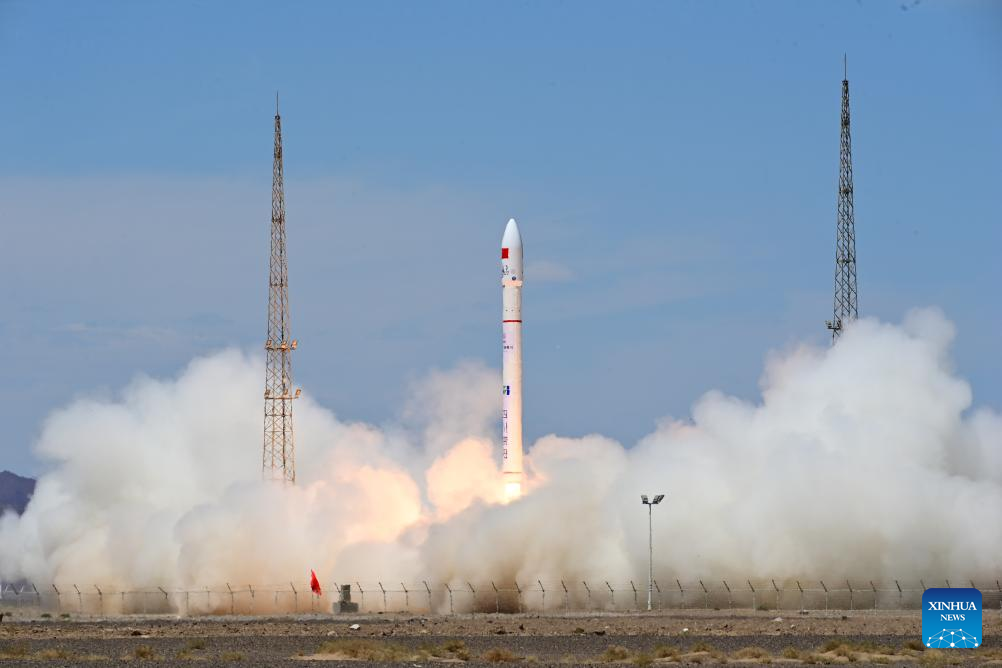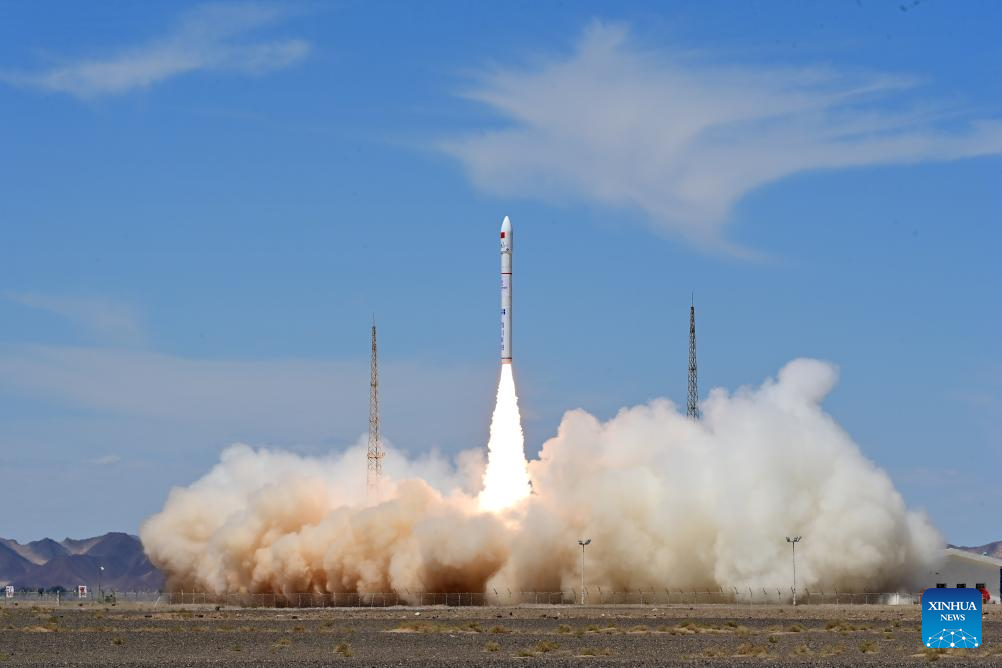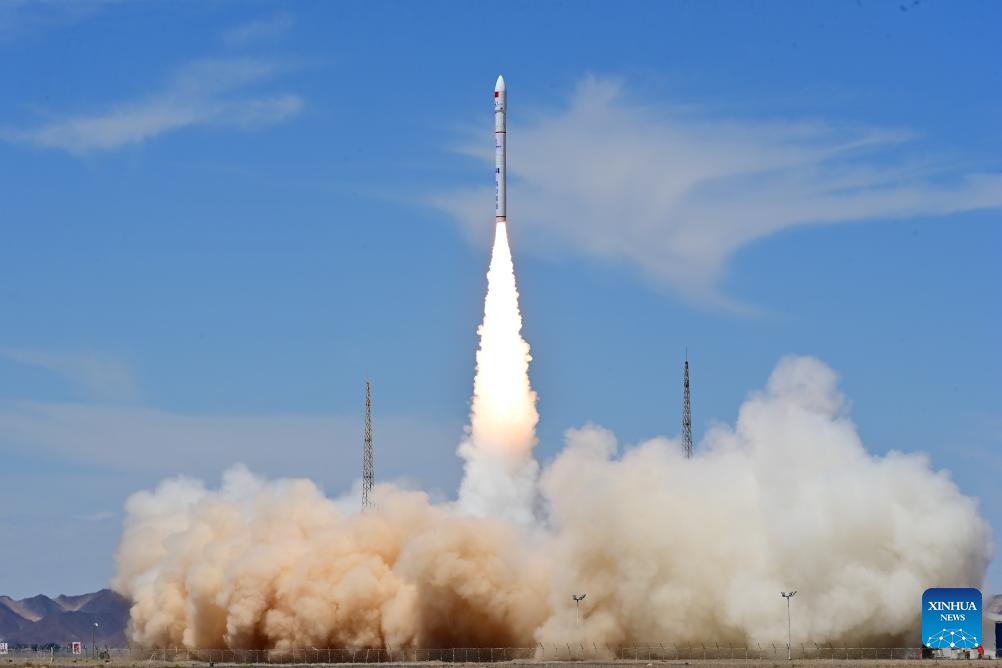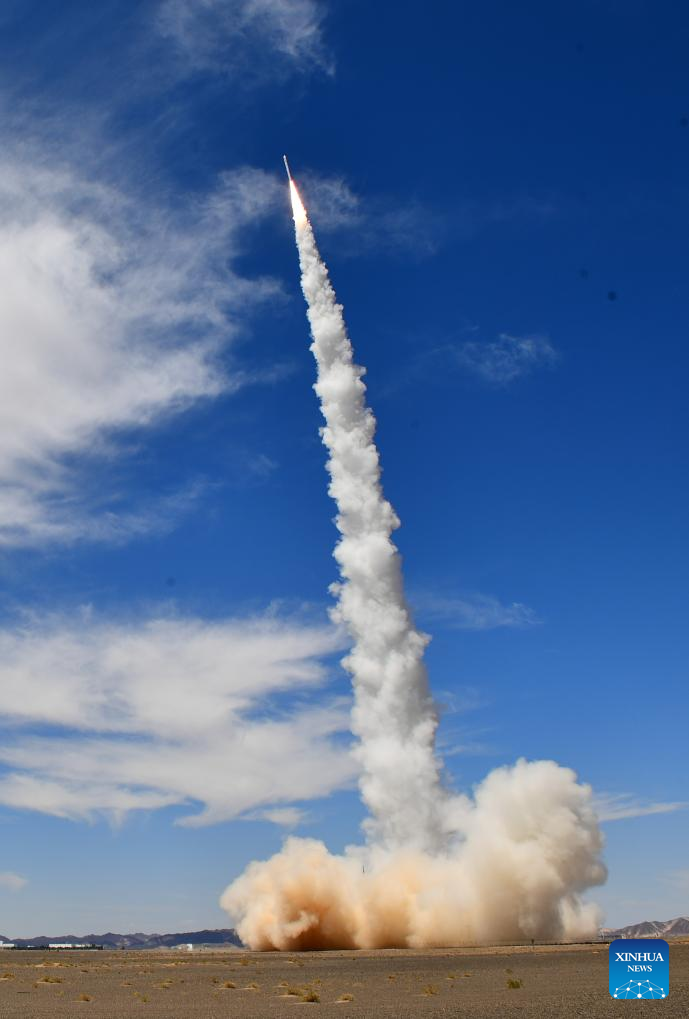
The CERES-1 Y6 carrier rocket is launched from the Jiuquan Satellite Launch Center in northwest China, July 22, 2023. The commercial rocket blasted off at 1:07 p.m. (Beijing Time) from the launch site, sending two commercial satellites, Qiankun-1 and Xingshidai-16, into the planned orbit. (Photo by Wang Jiangbo/Xinhua)
JIUQUAN, July 22 (Xinhua) -- China on Saturday launched the CERES-1 Y6 carrier rocket from the Jiuquan Satellite Launch Center in northwest China.
The commercial rocket blasted off at 1:07 p.m. (Beijing Time) from the launch site, sending two commercial satellites, Qiankun-1 and Xingshidai-16, into the planned orbit.
Developed by the Beijing-based high-tech company Galactic Energy, the CERES-1 is a small-scale solid-propellant carrier rocket capable of sending micro-satellites into orbit.
The launch was the sixth flight mission of the CERES-1 rocket series. ■

The CERES-1 Y6 carrier rocket is launched from the Jiuquan Satellite Launch Center in northwest China, July 22, 2023. The commercial rocket blasted off at 1:07 p.m. (Beijing Time) from the launch site, sending two commercial satellites, Qiankun-1 and Xingshidai-16, into the planned orbit. (Photo by Wang Jiangbo/Xinhua)

The CERES-1 Y6 carrier rocket is launched from the Jiuquan Satellite Launch Center in northwest China, July 22, 2023. The commercial rocket blasted off at 1:07 p.m. (Beijing Time) from the launch site, sending two commercial satellites, Qiankun-1 and Xingshidai-16, into the planned orbit. (Photo by Wang Jiangbo/Xinhua)

The CERES-1 Y6 carrier rocket is launched from the Jiuquan Satellite Launch Center in northwest China, July 22, 2023. The commercial rocket blasted off at 1:07 p.m. (Beijing Time) from the launch site, sending two commercial satellites, Qiankun-1 and Xingshidai-16, into the planned orbit. (Photo by Wang Jiangbo/Xinhua)

The CERES-1 Y6 carrier rocket is launched from the Jiuquan Satellite Launch Center in northwest China, July 22, 2023. The commercial rocket blasted off at 1:07 p.m. (Beijing Time) from the launch site, sending two commercial satellites, Qiankun-1 and Xingshidai-16, into the planned orbit. (Photo by Wang Jiangbo/Xinhua)



